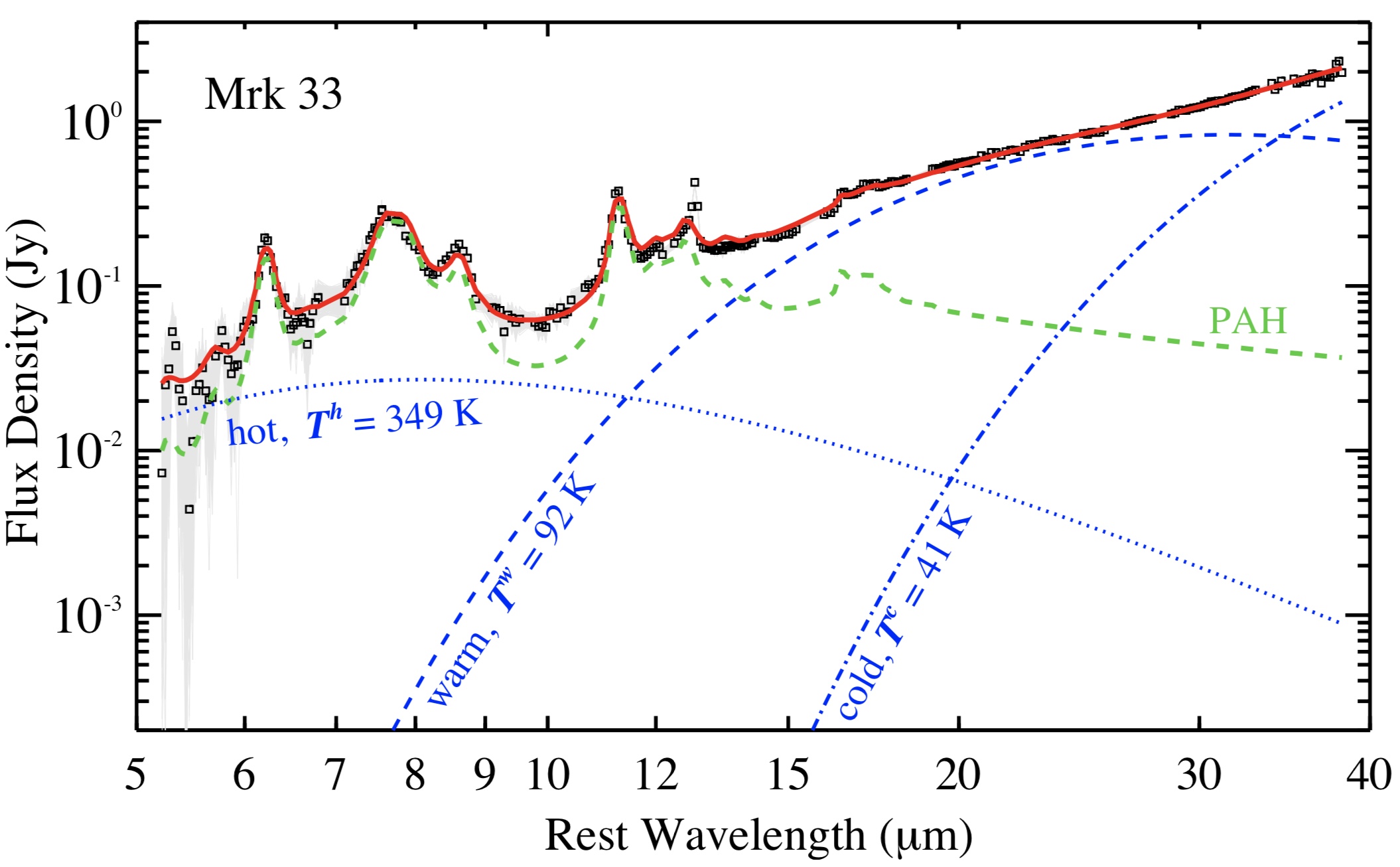Dust
Research area
We develop new methods to model the infrared spectral energy distribution of quasars and to estimate the total gas mass from the cold dust mass are developed. This enables the comparison of the gas mass of the quasar host galaxies to the quiescent galaxies with the cold gas directly measured in the local universe and reveals that the gas fraction of the quasar host is similar to the normal galaxies. It questions the efficacy of the so-called “quasar mode” feedback, as otherwise, the quasar is expected to blow the cold gas out of its host galaxy. (Ref: Shangguan et al. 2018, ApJ, 854, 158)
Meanwhile, PAHs have long been proposed as a useful tracer of SFR on galaxy scale. A tight correlation between PAH 6.2 μm and FIR luminosity have been detected in local star forming regions and nearby starburst galaxies.

Also, we present a new methodology to decompose PAH emission from the mid-infrared (MIR) spectrum by making use of the theoretical PAH template in conjunction with four dust components. Illustration of fitting to Mrk 33 using this new method is shown in the right figure. The comparison of the observed IRS spectrum (black squares) and the best-fit model (solid red line), comprising of theoretical PAH template (green dashed line), hot dust component (blue dotted line), warm dust component (blue dashed line) and cold dust component (blue dotted-dashed line). The gray shaded region is the simulated spectra generated from 500 Monte-Carlo simulations. (Ref: Xie et al. 2018, ApJ, 860, 154)